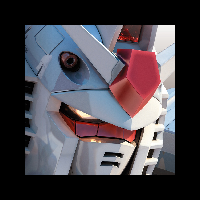Ujumbe: 33
Lugha: English
Zafur (Wasifu wa mtumiaji) 4 Septemba 2011 10:11:46 alasiri
I don't think simply "spotted" works because paint seems to imply party (more than 2) colours.
ceigered (Wasifu wa mtumiaji) 5 Septemba 2011 5:14:17 asubuhi
And "Pinto" means spotted, mottled, blotchy etc according to wikipedia, which basically derives from a variation of "pictus"/"pingere", and they aren't really so much a species as just a spotted horse, so yeah..
I think there's a lot of free variation you can go with here
Anyway, to keep things simple perhaps "Afrika sovaĝa hundo" (the germanic languages have variations of "Afrika sovaĝhundo", indicating that the "wild dog" is not just a "wild" "dog" but a unique creature), and "Makula/punkta ĉevalo" should do it for the horse. "Surpentrita ____" might work for more exotic descriptions (Painted-on)

EDIT: Interesting little bit of info, the romance languages use "licaón/licaone/licaon/mabeco" (ES/IT/FR/PT), although portuguese also uses "cão-caçador-africano" (african hunting dog), even though technically Lycaon refers to an extinct member of the genus too (also called the african hunting dog). Italian also refers to it as a "canide".
Hungarian calls it either "afrikai vadkutya" or "hiénakutya", which means "african wilddog" and "hyenadog".
So perhaps "afrika sovaĝhundo" or "likaono" could work too?)
Zafur (Wasifu wa mtumiaji) 8 Septemba 2011 10:53:55 alasiri
 "Surpentrita" is definitely what I was looking for.
"Surpentrita" is definitely what I was looking for. ceigered (Wasifu wa mtumiaji) 9 Septemba 2011 2:27:31 asubuhi
Zafur (Wasifu wa mtumiaji) 9 Septemba 2011 3:04:08 asubuhi

sudanglo (Wasifu wa mtumiaji) 9 Septemba 2011 10:36:43 asubuhi
An artist pentras la domon, an artisan farbas la domon. Both ideas are covered by the English word 'paint'
Zafur (Wasifu wa mtumiaji) 10 Septemba 2011 5:12:23 asubuhi
ceigered (Wasifu wa mtumiaji) 10 Septemba 2011 5:43:59 asubuhi
Zafur:The difference is really subtle... I'm not entirely sure I can see the difference?farbi comes from german/belorussian influence I think, and has more an idea of colouring, or a more uniform method of painting.
E.g. when you paint the walls of a house, you normally paint them a single colour, like mine are a neutral green and white. It's a very basic act, normally part of a system of creating something.
Pentri, I believe is more artistic - e.g. for the sake of art, to create a picture.
An adult might "farbi" the walls of a house, and a toddler might "pentri" on them after

---
So, when you farbi, you apply a layer of paint to something.
When you pentri, you paint an object, image, idea (onto something).
Zafur (Wasifu wa mtumiaji) 10 Septemba 2011 5:57:42 asubuhi

sudanglo (Wasifu wa mtumiaji) 10 Septemba 2011 10:59:58 asubuhi
the Zamenhofian word 'pigmento' (so 'pigmentita' is coloured with an artificial or natural pigment), 'kolor(ig)ita' which is a very general term, and ŝminkita might be used of a 'painted woman/lady'

